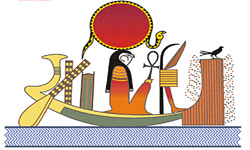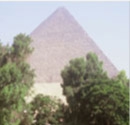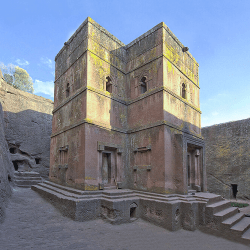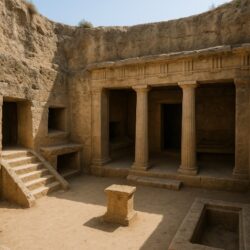Feluccas are more than just boats—they’re a living legacy of Egypt’s ancient history. For centuries, these graceful, wind-powered vessels have glided along the mighty Nile River, untouched by the rapid march of time and modern technology. From the days of the Pharaohs to present-day tourism, the felucca has stood as a symbol of quiet endurance and cultural pride.
The Historical Significance of Feluccas
Feluccas have been a part of Egyptian river life since ancient times. Their slender forms and tall sails are depicted in temple carvings and tomb murals, showcasing their integral role in transporting goods, people, and messages up and down the Nile. Long before roads or railways crisscrossed the region, feluccas were the lifeline of Egyptian civilization, navigating the longest river in the world with silent grace.
Despite the arrival of modern cargo ships and motorboats, feluccas remain surprisingly unchanged. Their lasting presence on the river is a testament to their simple yet effective design and the unwavering bond between these vessels and the people of the Nile.
Anatomy of a Traditional Felucca
Modern feluccas still maintain the traditional elements that have defined their structure for thousands of years. Most are made of wood, though today you might see fiberglass or metal reinforcements used for durability. They don’t have an engine or a traditional keel. Instead, they feature a heavy center plate that can be lifted in shallow waters, allowing the boat to sail close to shorelines or even beach if needed.
The sails are large, triangular, and often hand-stitched from natural fibers like Egyptian cotton. Their size and shape are specifically designed to harness the river breeze, which usually builds up during the day and fades by nightfall. The boat itself is relatively flat-bottomed, providing stability in the calm waters of the Nile.
How Feluccas Differ from Modern Boats
What makes feluccas so distinct is their deliberate simplicity. Unlike modern vessels that depend on engines and high-tech navigation systems, feluccas rely solely on the wind and current. There’s no roar of a motor—just the sound of water lapping against the hull and the soft flap of the sails.
This low-tech approach is not a drawback but a charm. It allows passengers to experience the Nile the way ancient Egyptians did: slowly, peacefully, and intimately connected with nature. In a world dominated by speed, feluccas offer a rare opportunity to slow down and breathe.
Sailing the Nile Today on a Felucca
Today, felucca rides are a beloved part of the tourist experience in Egypt. Many visitors opt for a sunset sail near Luxor or Aswan, where the view of ancient temples and palm-lined banks from the deck of a felucca is simply magical. These trips can last anywhere from an hour to multiple days, complete with meals and overnight stays on deck under the stars.
Tourists often describe these journeys as the most peaceful part of their entire Egyptian adventure. With no engine noise and a view that changes gently with every gust of wind, felucca rides offer a meditative escape from the rush of modern life.
The Cultural Symbolism of Feluccas
In Egyptian art and literature, feluccas represent more than transport—they’re a metaphor for life’s journey. Their sails stretched to catch the wind symbolize freedom, patience, and the age-old wisdom of adapting to nature. Feluccas are often featured in local paintings, poetry, and even music as a symbol of simplicity and serenity.
For locals, these boats are a source of pride. Captaining a felucca is often a family trade, passed down from father to son. It’s not just a job; it’s a legacy that preserves a living link to Egypt’s ancient past.
Felucca Construction and Craftsmanship
While the basic design remains unchanged, the way feluccas are built today combines traditional know-how with some modern techniques. Skilled craftsmen still build them largely by hand, especially in villages near Aswan and Kom Ombo, where boat-building is a heritage skill.
The wooden frames are crafted carefully, each joint sealed to withstand the river’s flow. The sails are sewn using time-honored patterns that have been proven over millennia to catch just the right amount of wind. It’s this mix of tradition and adaptability that keeps felucca building alive in a fast-changing world.
Why Feluccas Endure in the Age of Technology
In a time when even bicycles have electric variants, you might wonder how an engine-less boat still draws crowds. The answer lies in what technology can’t replicate—experience. Feluccas offer a unique, authentic journey. They’re eco-friendly, using zero fuel and producing no noise or pollution. They connect people with the landscape and history in a way no modern boat can.
Tourists and locals alike value the felucca not just for its function but for the feeling it provides: one of stepping into a story that began thousands of years ago and still floats gently on.
Best Times of Year to Experience a Felucca Ride
The ideal time for a felucca ride is between October and April, when the weather in Egypt is cooler and more comfortable. The Nile’s breezes during this season are steady and perfect for sailing. Summer can be very hot, especially around midday, though some evening sails are still pleasant.
If you want the best light for photos and a magical ambiance, try a sunset sail. As the golden light hits the river and the call to prayer echoes across the banks, you’ll understand why this ancient boat continues to capture the hearts of so many.

Frequently Asked Questions (FAQs)
1. Are feluccas safe for tourists?
Yes, felucca rides are very safe. Most operators follow strict safety guidelines and offer life jackets on board.
2. How long is a typical felucca ride?
A standard trip lasts between 1 to 2 hours, but longer journeys can span several days with overnight stays.
3. Do feluccas operate year-round?
Yes, though the best months are from October to April for optimal weather and wind conditions.
4. Can I rent a private felucca?
Absolutely! Many travelers choose private feluccas for a more personal and romantic experience.
5. Are there toilets on board?
Most feluccas don’t have built-in toilets, but for longer journeys, stops are arranged onshore or a support boat may accompany the trip.
6. What should I bring for a felucca ride?
Bring sunscreen, a hat, water, and a light jacket if you’re sailing in the evening. For overnight trips, pack a sleeping bag or blanket.
Feluccas—Egypt’s Floating Heritage
The felucca isn’t just a boat—it’s a piece of Egyptian soul that continues to glide gently through the fabric of time. While technology races forward, the felucca lingers quietly on the Nile, reminding us that sometimes, the best journeys are the slow ones. For travelers, locals, and history lovers alike, sailing on a felucca is a must-have experience—a tranquil voyage into the heart of Egypt’s eternal river.









